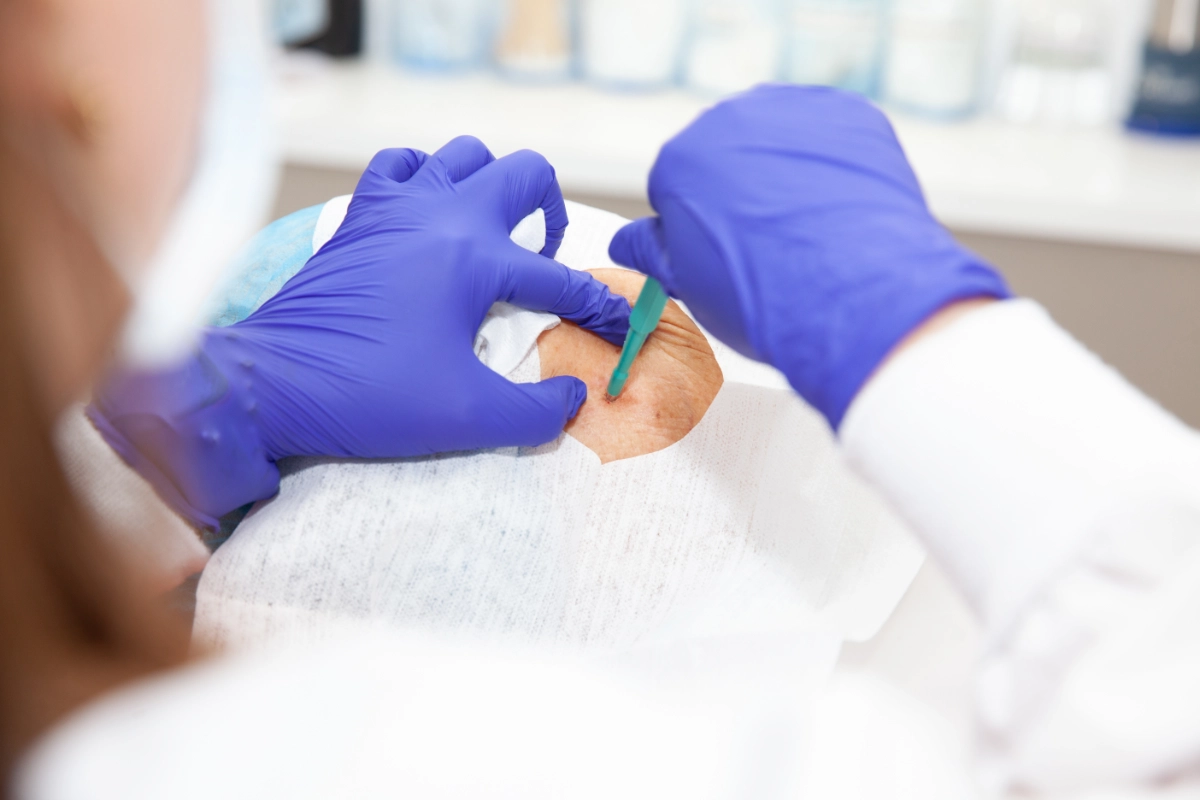
A skin biopsy is a simple, in-office procedure used to diagnose a variety of skin conditions by removing a small sample of skin for laboratory analysis. It is a key tool in detecting skin cancers, inflammatory conditions, and other dermatologic concerns with accuracy.
When a Skin Biopsy May Be Recommended
Your dermatologist may suggest a biopsy if you have:
- A suspicious mole or skin growth
- A rash or lesion that does not resolve with treatment
- A sore that does not heal
- Changes in skin color, texture, or thickness
- Symptoms suggesting autoimmune or inflammatory skin disease
Types of Skin Biopsies
- Shave Biopsy – Removes the outer layers of skin for surface-level analysis.
- Punch Biopsy – Uses a circular tool to remove a deeper core of skin, including the epidermis, dermis, and superficial fat.
- Excisional Biopsy – Surgically removes the entire lesion, often used for larger or high-risk growths.
What to Expect
- Preparation: The biopsy site is cleaned, and local anesthesia is applied to ensure a painless experience.
- Procedure: The appropriate biopsy method is performed based on the size, location, and nature of the skin concern.
- Aftercare: A bandage is applied, and you will receive detailed instructions to promote healing and reduce the risk of scarring or infection.
- Results: The sample is sent to a dermatopathology lab for microscopic examination, and results are typically available within 1–2 weeks.
Why Skin Biopsies Matter
Early and accurate diagnosis allows for timely treatment, improving outcomes for both benign and serious skin conditions.
At Modern Dermatology, our team combines precision, advanced techniques, and patient comfort to ensure your biopsy is performed safely and effectively.
